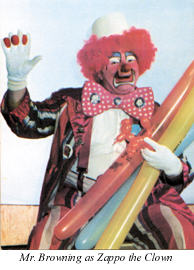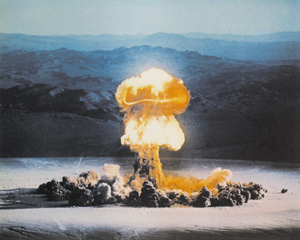|
“That was our effort. Between saving metal and savings stamps…
we, along with the whole country, got involved in the war effort… and bringing our guys home.” |
|
 |
 |
|
Childhood
Memories of World War II
|
|
|
-An
oral history of Robert Browning
|
Home | Table of Contents | Previous Story | Next Story
Personal Profile | Student Perspective | Audio Interview
|
Although a young child at the time, Mr. Browning clearly remembers the “tremendous effort . . . to try to get us ready” for the war. There were regular air raid drills during school. People busied themselves preparing bomb shelters. Mr. Browning recalls that these preparations were thought necessary because Houston would make a good bombing target, given its industrial contribution to the war effort. After some time, an attack on Houston seemed unlikely, so the emphasis on these emergency procedures ceased. A real “turn around” in Mr. Browning’s attitude towards the war came as he grew older and “got involved in saving scrap metal for the war drive or savings stamps.” Like many other children, he collected savings stamps so that he could eventually purchase an eighteen-dollar war bond. “That was our effort,” he reminisces. “Between saving metal and savings stamps . . . we, along with the whole country, got involved in the war effort . . . and bringing our guys home.” Contributing to the war effort in his own way really helped Mr. Browning overcome the anger he felt toward the government for taking his father away. Once the troops came home, Mr. Browning’s father returned from his base in San Diego. The father and son then worked as a team, delivering newspapers until they were able to purchase the family’s first car. The Brownings also bought their first home with the help of the GI Bill, shortly after the war. Mr. Browning fondly says, “It was a pretty happy time.”
Mr. Browning takes great pride in the work he did photographing nuclear tests, but recognizes that scientific advances since then have overshadowed the work done at the Nevada Test Site. “At the time I shot the picture [of Priscilla] it was a big thing.” |
Home | Table of Contents | Previous Story | Next Story
 Robert
“Bob” Browning was just a child in elementary school when he first saw the
bombing of Pearl Harbor on newsreels and his “father and uncles were taken
by the military to go to war.” Young Bob was mad that his father had to go
to war, but at the same time, relieved that he would remain in the U.S. to
run the San Diego base’s Non Commissioned Officers Club. Mr. Browning’s uncles
were not so lucky, though. Both were sent overseas—one aboard the USS New
Jersey and the other as a Seabee in the South Pacific. He recalls how lonely
his mother and aunts seemed while their husbands were away.
Robert
“Bob” Browning was just a child in elementary school when he first saw the
bombing of Pearl Harbor on newsreels and his “father and uncles were taken
by the military to go to war.” Young Bob was mad that his father had to go
to war, but at the same time, relieved that he would remain in the U.S. to
run the San Diego base’s Non Commissioned Officers Club. Mr. Browning’s uncles
were not so lucky, though. Both were sent overseas—one aboard the USS New
Jersey and the other as a Seabee in the South Pacific. He recalls how lonely
his mother and aunts seemed while their husbands were away. After
spending one year at Texas A&M University, Mr. Browning was drafted into the
Army and was assigned work in the photo lab at Fort Bliss, Texas with the
Continental Army Command - Test Board Four. In 1957, he was sent to Nevada
Test Site—a nuclear weapons testing facility. There he photographed eighteen
atomic tests including the Priscilla test shot. Mr. Browning recalls one frightening
time when something went wrong at the test site. An attempted test resulted
in a hang fire—the bomb failed to fire—and two nuclear scientists had to manually
disarm the bomb. Observers held their breaths as the scientists climbed the
soaring tower that housed the detonation device. “They were afraid to use
the elevator for fear the vibration of the elevator would set off the mechanism,”
Mr. Browning says. The bomb was disarmed without incident. “There were always
things that went wrong,” he reflects.
After
spending one year at Texas A&M University, Mr. Browning was drafted into the
Army and was assigned work in the photo lab at Fort Bliss, Texas with the
Continental Army Command - Test Board Four. In 1957, he was sent to Nevada
Test Site—a nuclear weapons testing facility. There he photographed eighteen
atomic tests including the Priscilla test shot. Mr. Browning recalls one frightening
time when something went wrong at the test site. An attempted test resulted
in a hang fire—the bomb failed to fire—and two nuclear scientists had to manually
disarm the bomb. Observers held their breaths as the scientists climbed the
soaring tower that housed the detonation device. “They were afraid to use
the elevator for fear the vibration of the elevator would set off the mechanism,”
Mr. Browning says. The bomb was disarmed without incident. “There were always
things that went wrong,” he reflects.